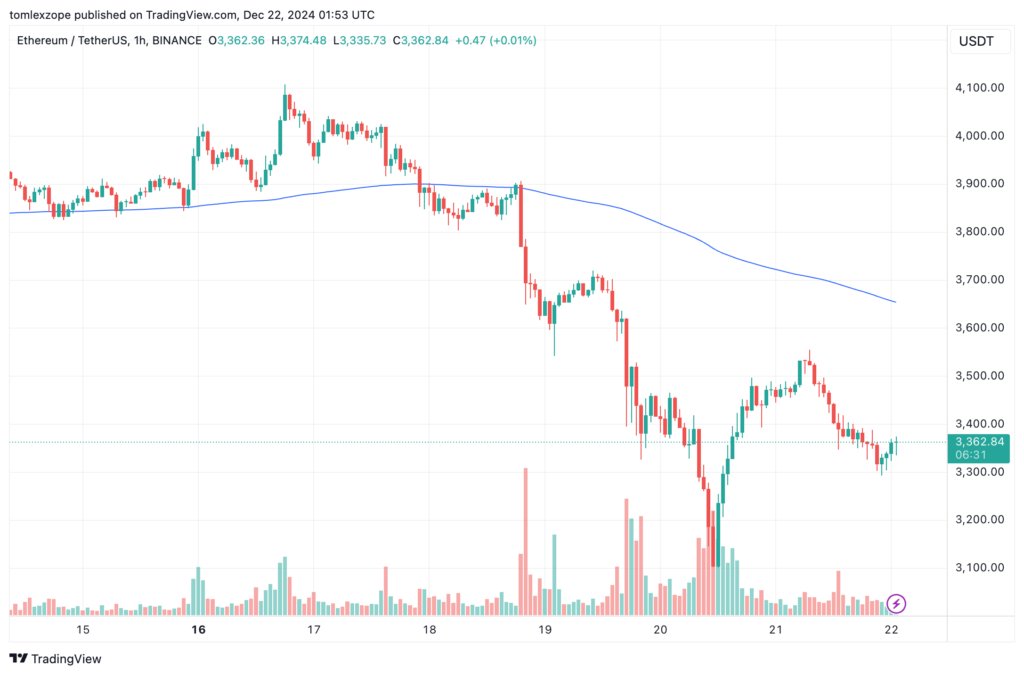After weeks of outperformance by other cryptocurrencies, ethereum’s price dropped more than 12% in the past week, a major setback. The downturn is blamed on combined factors such as the US Federal Reserve cutting interest rates and poor performance of Ethereum spot exchange traded funds (ETFs), analysts say.
The data from SoSoValue shows that over the last few days, US based spot Ethereum ETFs have had a combined net outflow of $135 million in combined flows over two days, pulling in $75.11 million in outflows on Friday, December 20th alone. It’s the first back to back negative performance for these funds.
Ethereum ETFs End 18-Day Positive Inflow Streak
Ethereum ETFs came to an end of an 18 day streak of positive inflows with $60 million in net outflows on Thursday, December 19. It was also the first negative day for Ethereum ETFs in December.
The sharpest decline was for BlackRock’s ETH ETF (ETHA), which experienced outflows of $103.7 million on Friday among its funds. By comparison, Fidelity’s Ethereum Fund raised $12.95 million in inflows, while Grayscale’s ETH Trust (ETHE) and Mini Trust (ETH) records positive inflows of $7.51 million and $8.10 million, respectively.

The sharp slump in ETH midweek does not take away from the fact that ETFs on the cryptocurrency finished the week with a net inflow of $62.73 million, which made it the fourth straight week of gains. Meanwhile, the overall feeling indicates dwindling appetite for crypto ETFs in general, even for the spot Bitcoin ETFs, as they saw outflows of $276 million on Friday.
However, as ETH price currently is around $3,342, down by 2.4 percent in the last 24 hours, its ETF activity has fallen along with it. To regain investor confidence and begin flowing positively, analysts suggest ETH will need to sell ETFs.
The story of this market shift serves to highlight the narrow line between macroeconomic conditions and sentiment of investors on which crypto has been and is being built. Traders and investors are still evaluating these developments but now Ethereum’s near term trajectory is still unclear.

